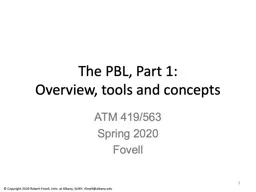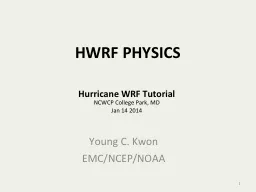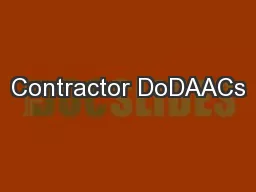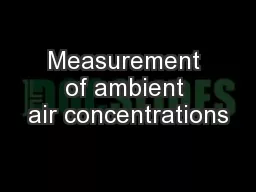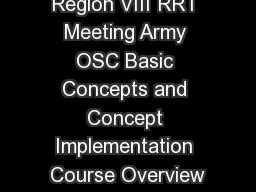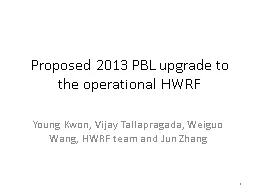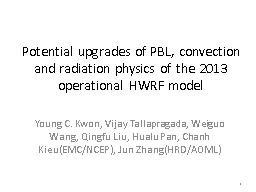PPT-The PBL, Part 1: Overview, tools and concepts
Author : danika-pritchard | Published Date : 2018-03-14
ATM 419563 Spring 2018 Fovell 1 The PBL The planetary boundary layer PBL or atmospheric boundary layer ABL is the lowest part of the troposphere where interactions
Presentation Embed Code
Download Presentation
Download Presentation The PPT/PDF document "The PBL, Part 1: Overview, tools and con..." is the property of its rightful owner. Permission is granted to download and print the materials on this website for personal, non-commercial use only, and to display it on your personal computer provided you do not modify the materials and that you retain all copyright notices contained in the materials. By downloading content from our website, you accept the terms of this agreement.
The PBL, Part 1: Overview, tools and concepts: Transcript
Download Rules Of Document
"The PBL, Part 1: Overview, tools and concepts"The content belongs to its owner. You may download and print it for personal use, without modification, and keep all copyright notices. By downloading, you agree to these terms.
Related Documents

